Education Sector Logon
2024 User testing
Education Sector Logon (ESL) is an identity management and authentication application that allows education providers and teachers to securely access a range of education sector applications.
My role in the development of this application was to design and user test the multi-factor authentication part of the login flow. MFA was a recent addition to ESL login for added security.
Tools: Figma/Figjam, Microsoft Teams
This MFA setup screen (below) was the main screen that needed to be tested and validated. It is the initial screen that users are presented with when they start the set-up process. It contains all the instructions for downloading an authenticator app and setting up an instance for an ESL account. We also included an alternative MFA option for non-smartphone users.
I conducted user tests with about 10 ESL users and gathered feedback for the MFA setup page, as well as the user flows for a returning user, set up cancellation, logging in to different ESL applications after succesfully completing MFA, and removing MFA on behalf of someone as an admin.

User test plan
Prior to the user tests, a user test plan was written up to define objectives and to provide a guide to follow when conducting user test sessions.

Below are our assumptions for the user tests. These were things to keep in mind when prompting the test participants.
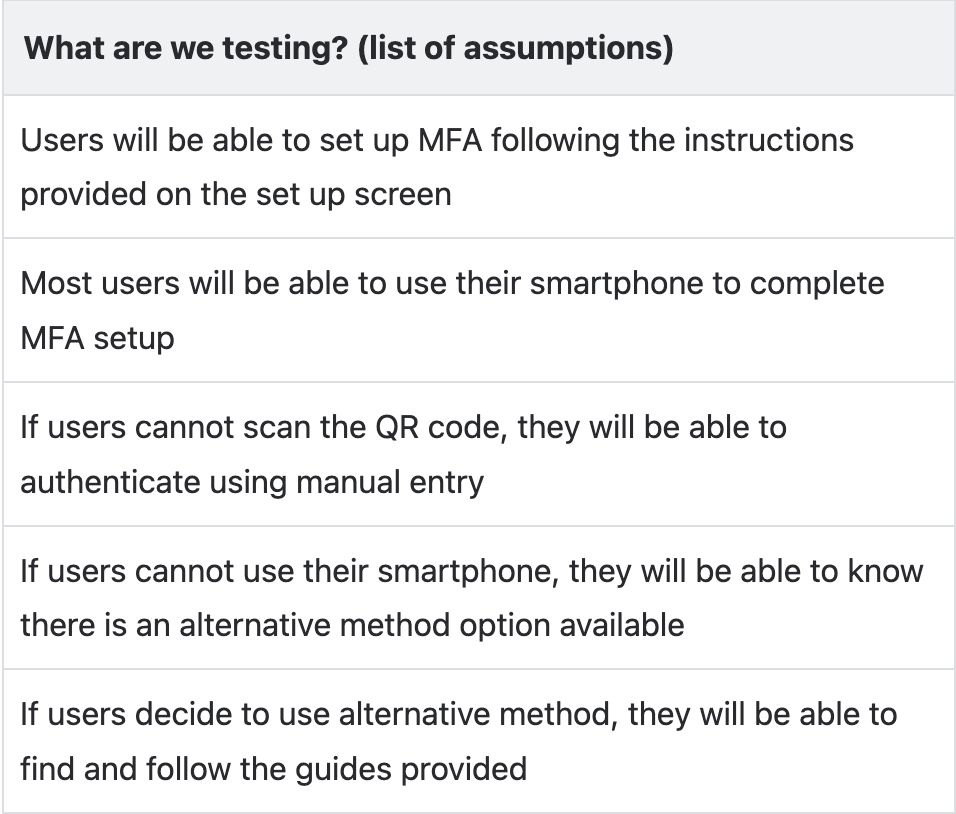
A script was written to follow during the test sessions. This kept us on track and made sure we tested all the possible user journeys that a user would go through during the MFA setup.
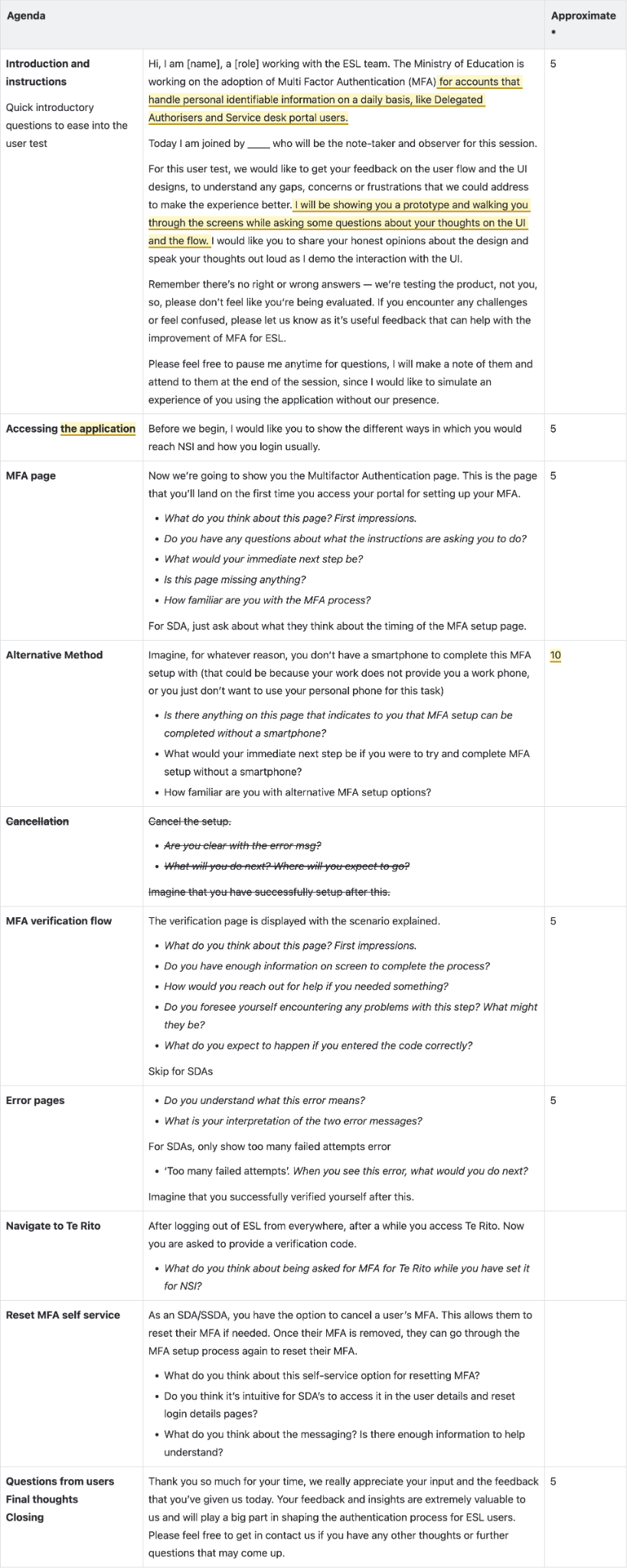
User testing sessions
I facilitated 1:1 online user test sessions with internal ESL users with the help of a note-taker. We set up a note-taking space on FigJam to record feedback and outcomes from each user test. All sessions were recorded with transcriptions for future reference.
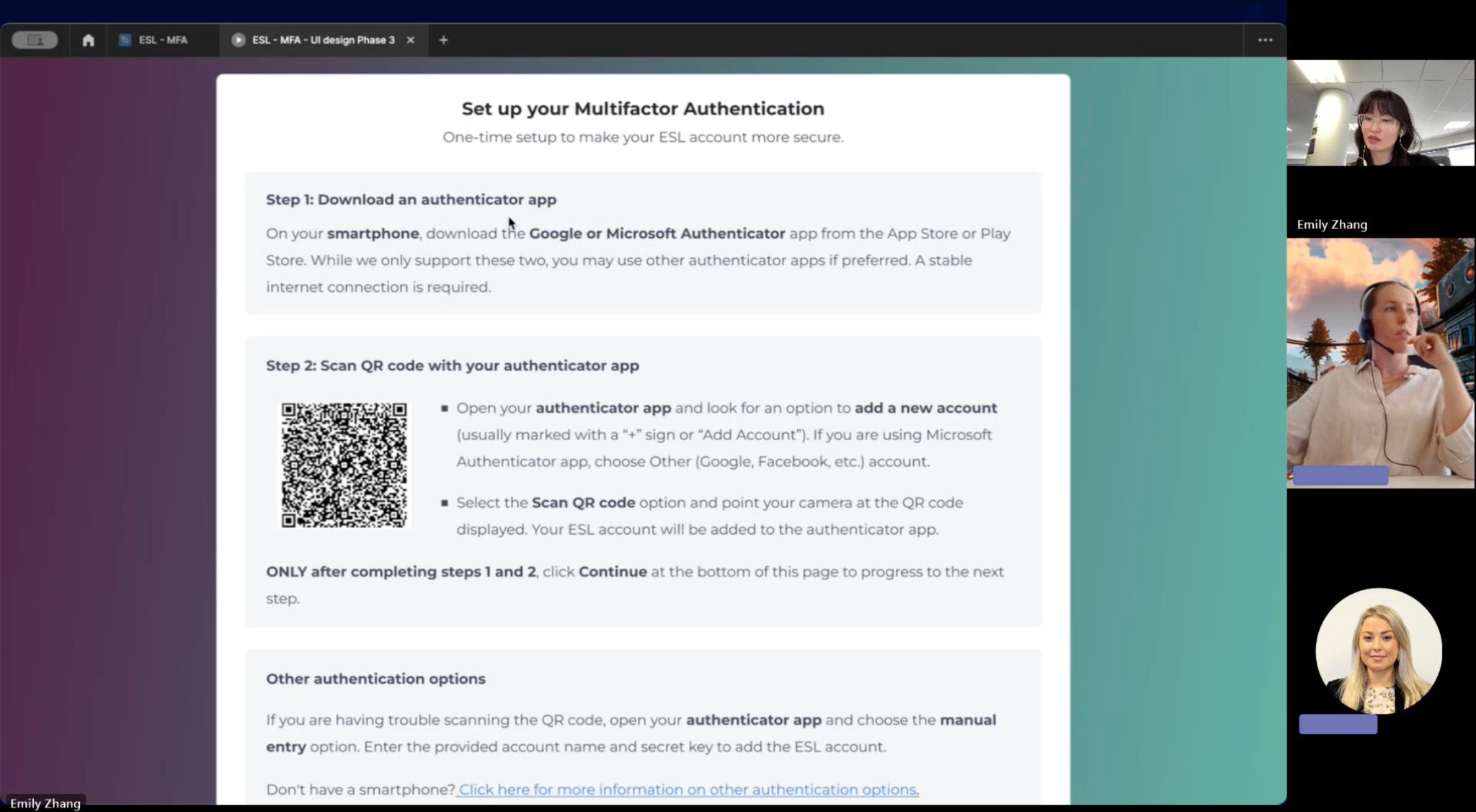


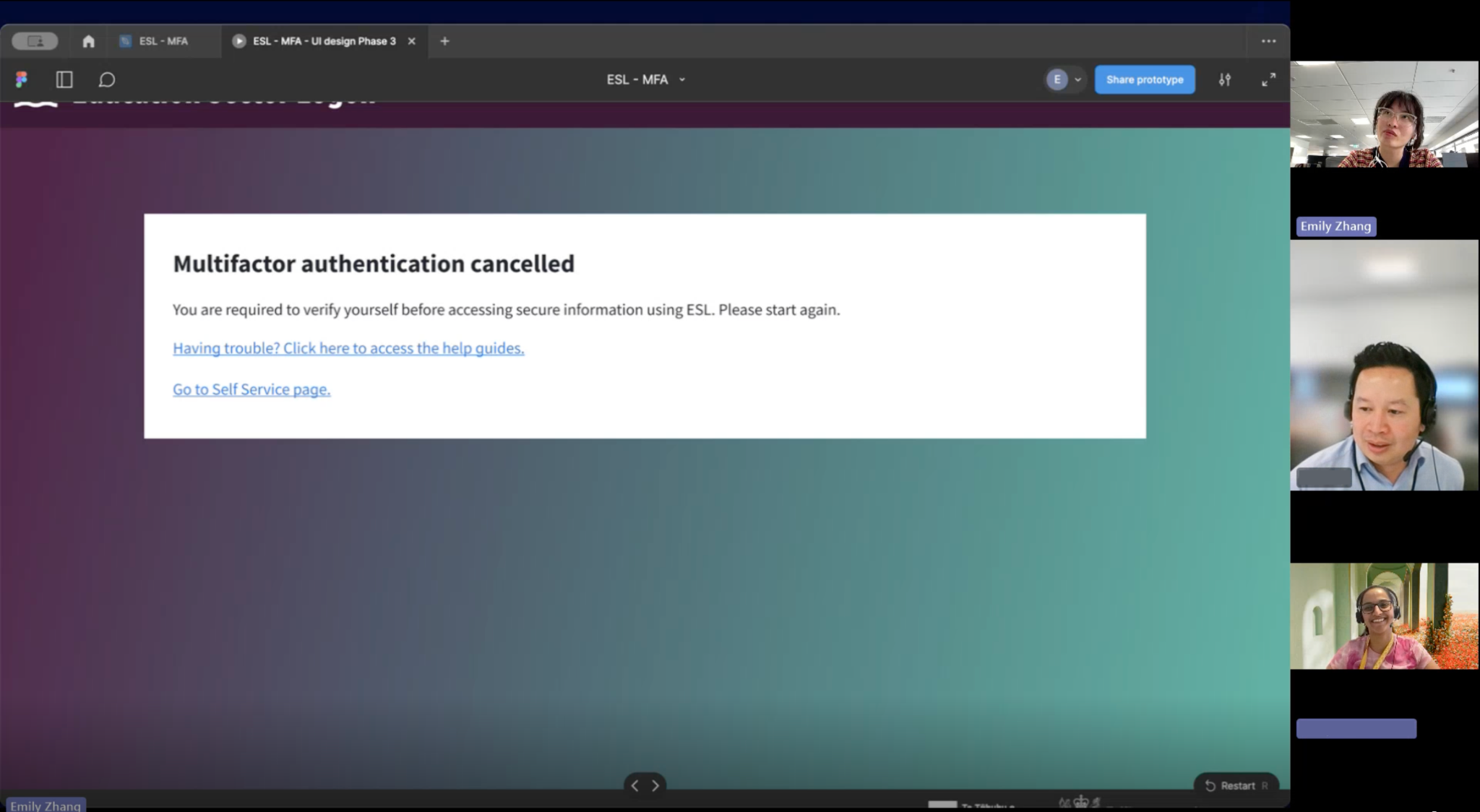
Findings
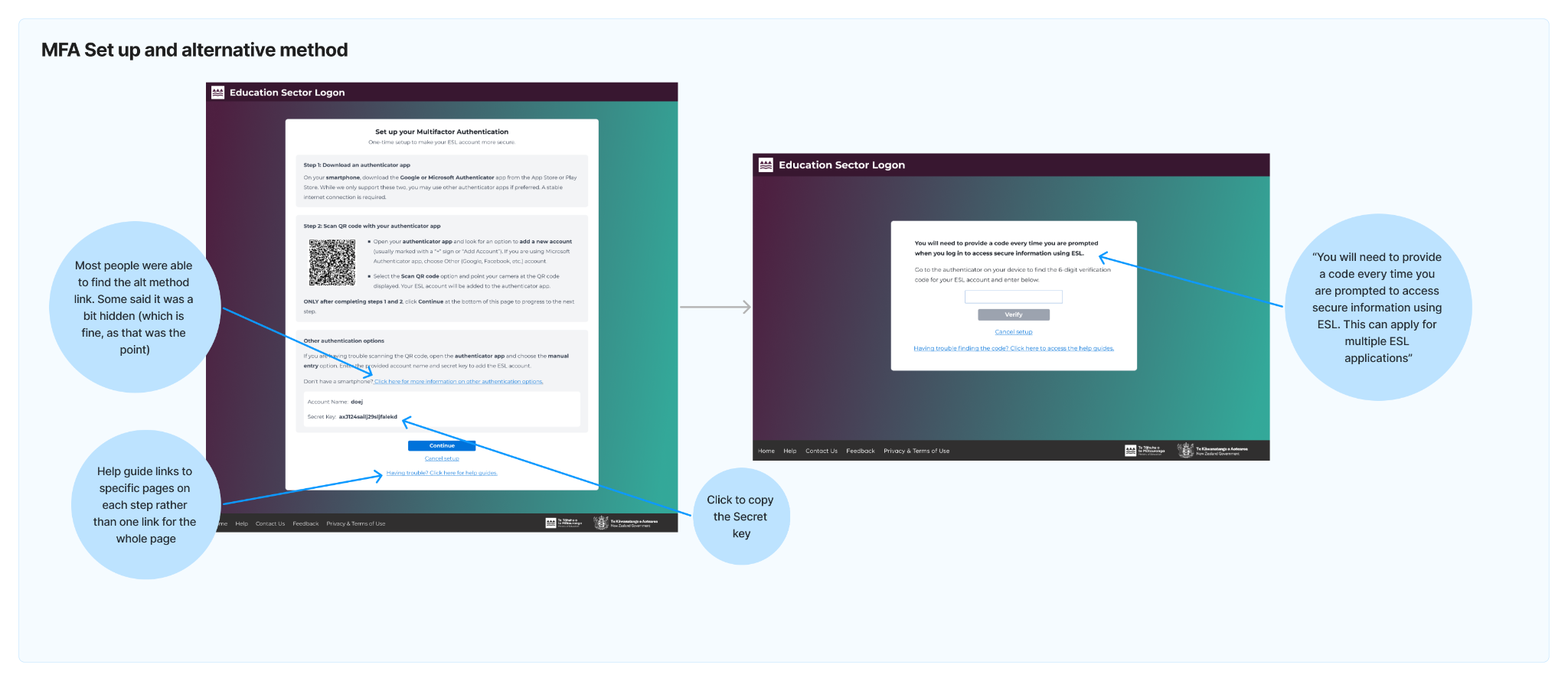
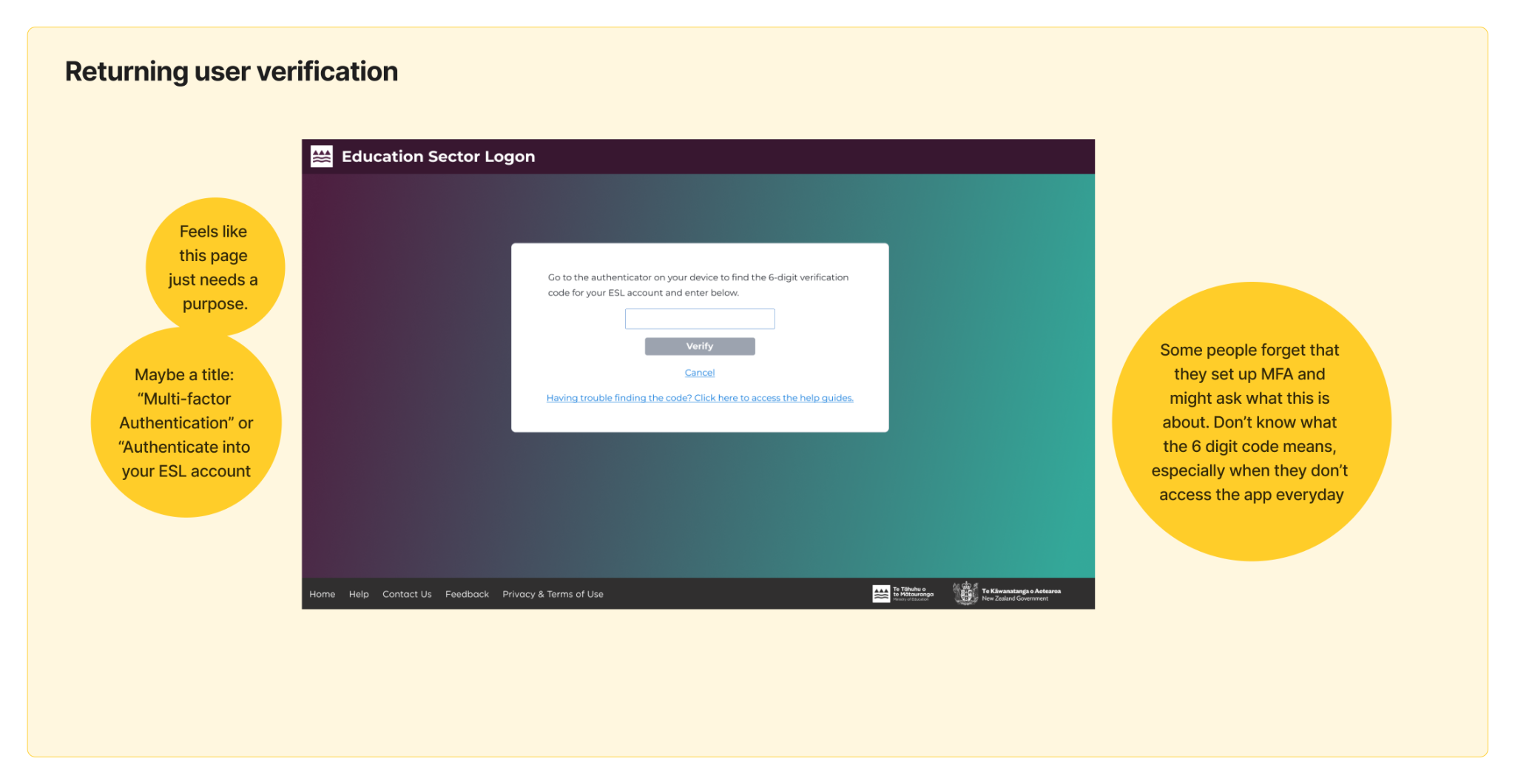
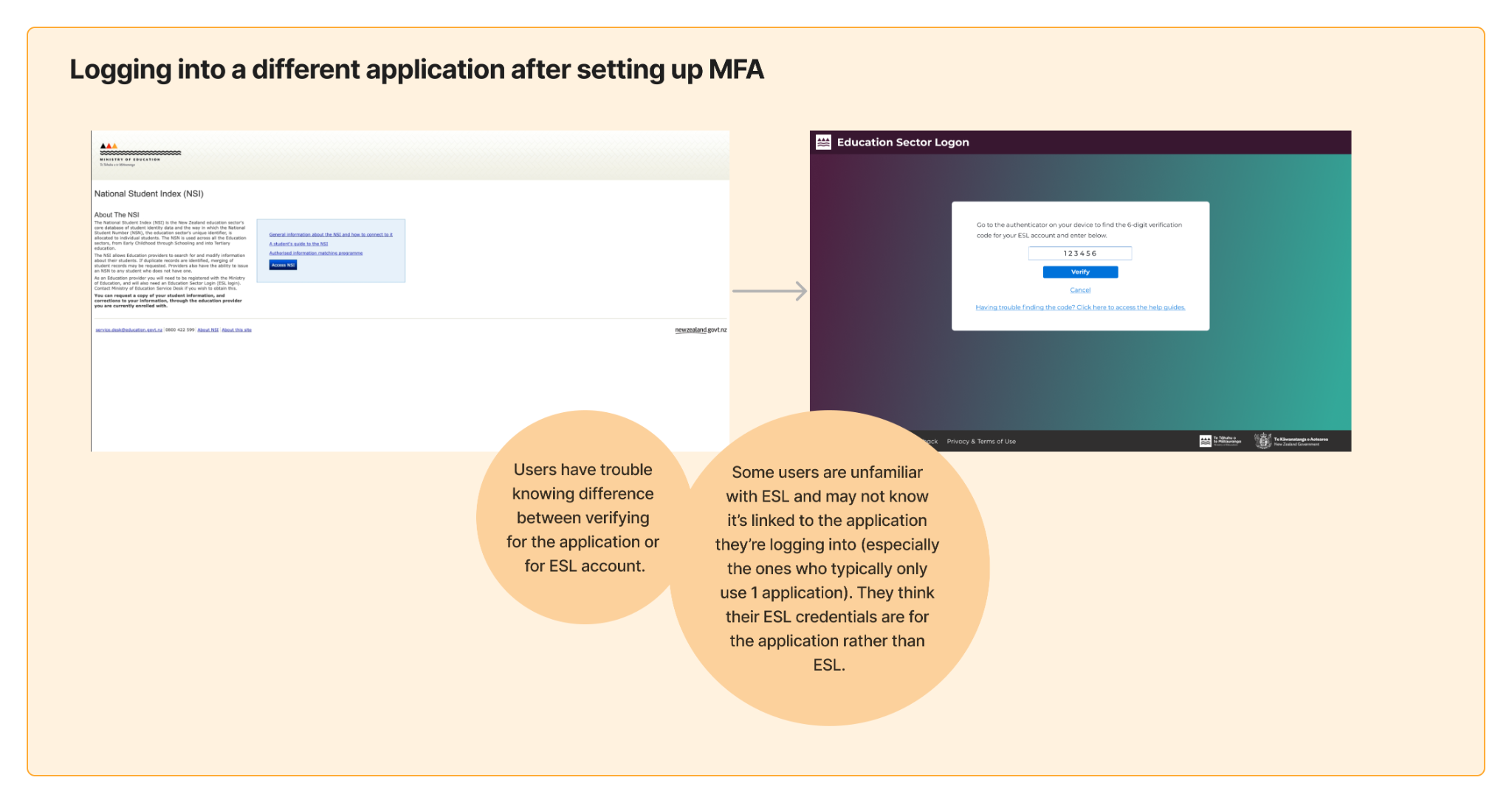
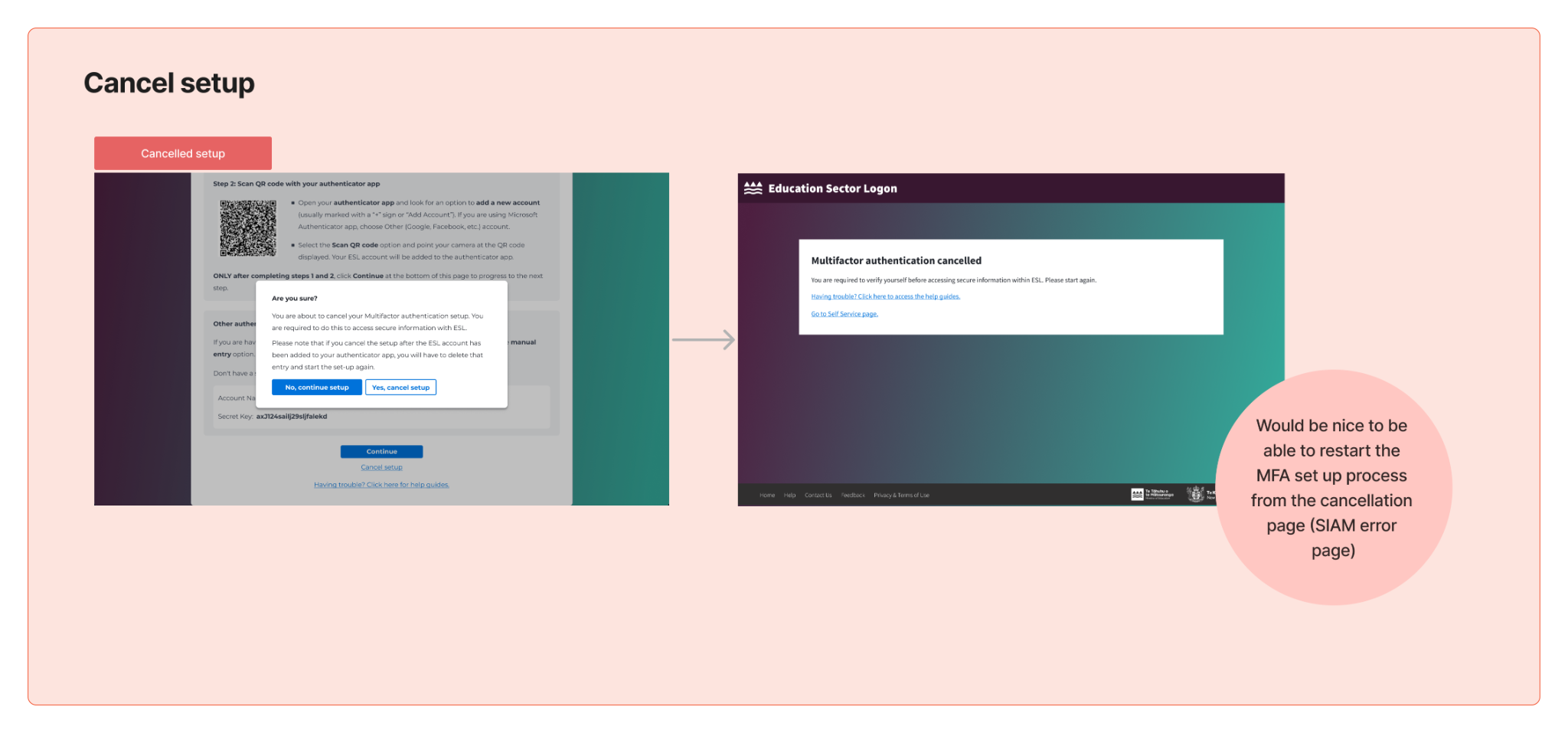
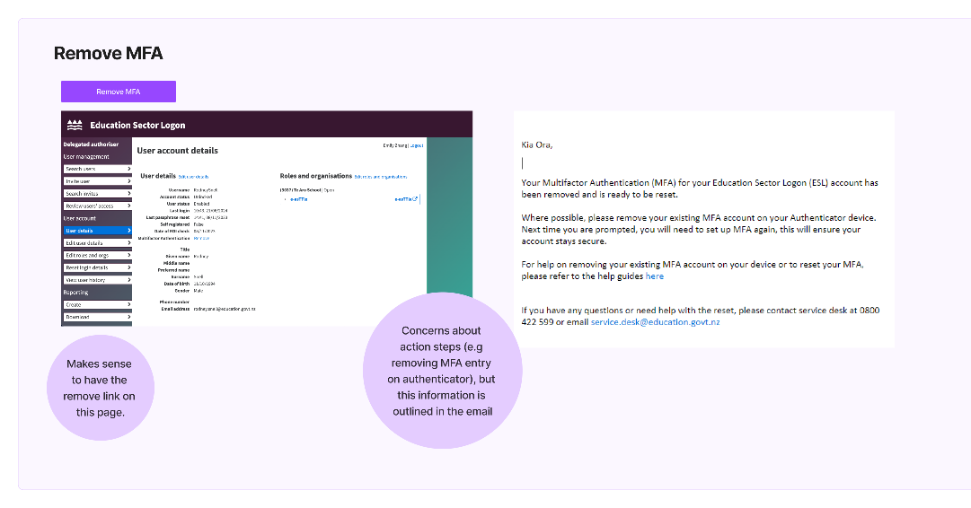
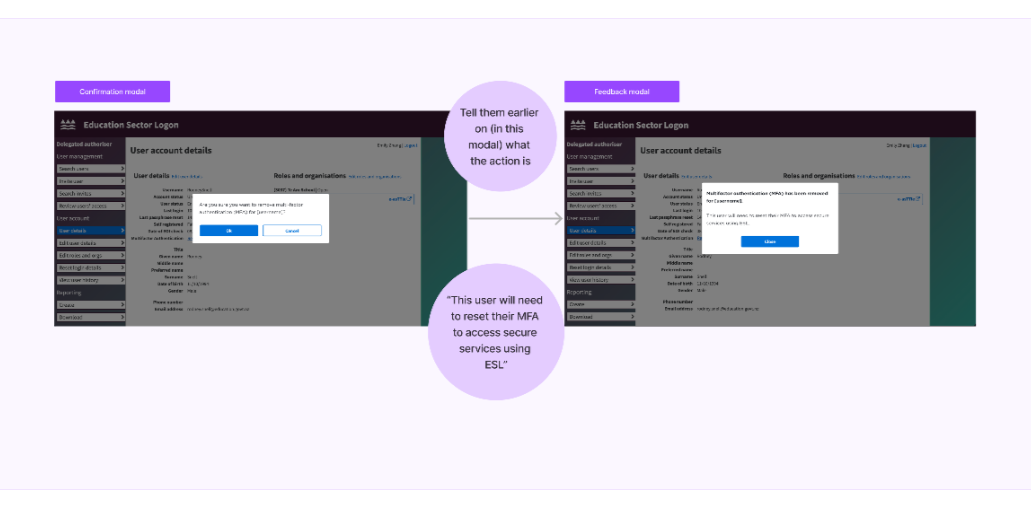
Personas
From the user tests, I derived 3 user personas to support our findings. With these personas we were able to match pain points to different tech-competency levels of novice, intermediate, and proficient. Because a large majority of ESL users are not tech-savvy and may have no prior experience with multi-factor authentication, we had to accommodate for the lowest tech-competency level.
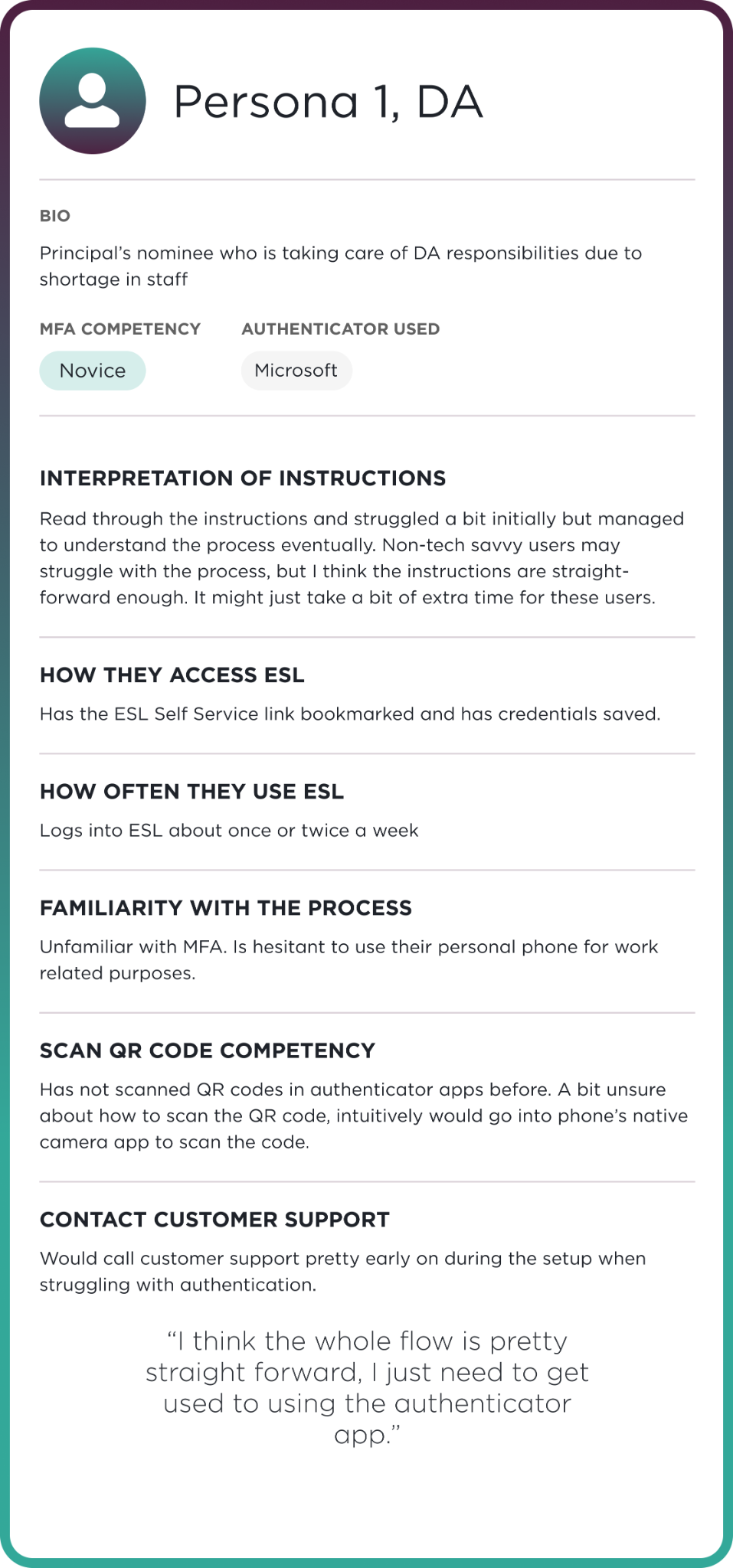
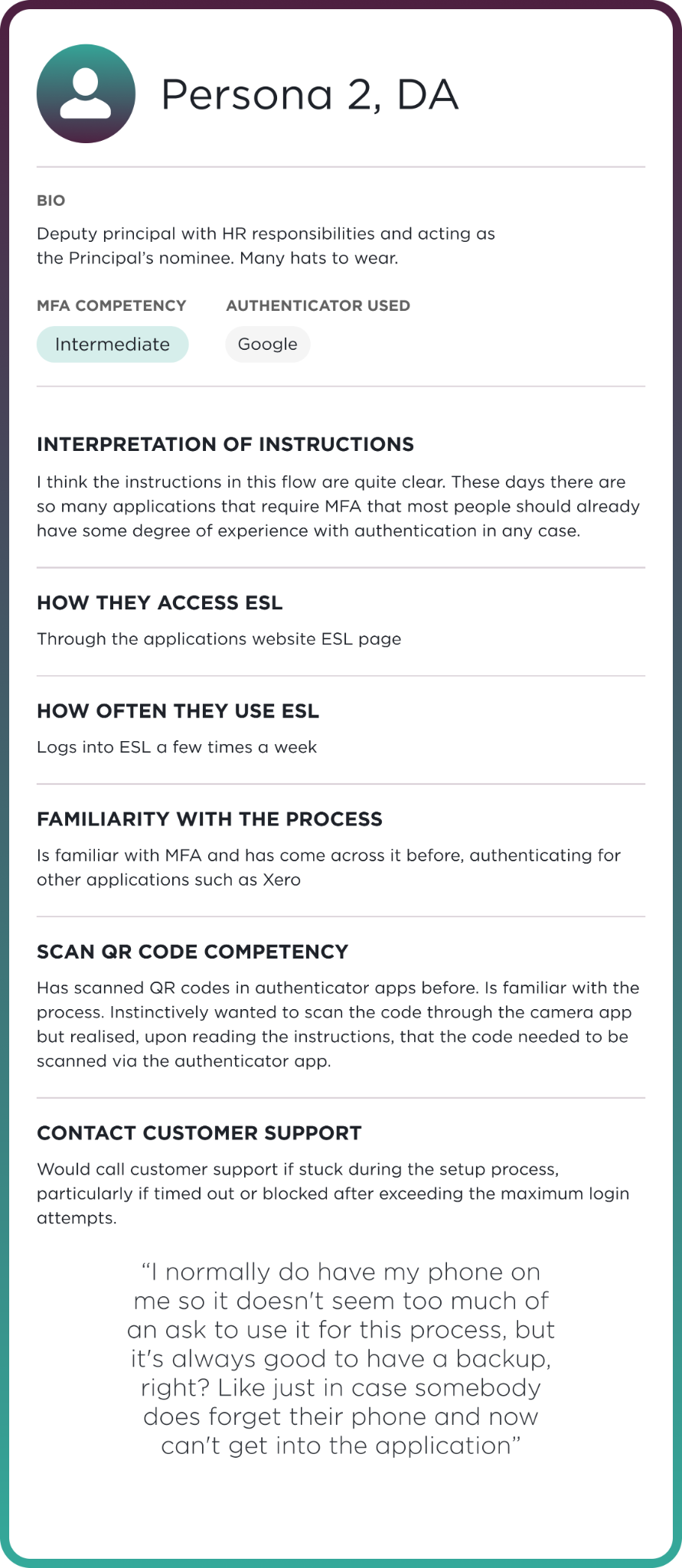
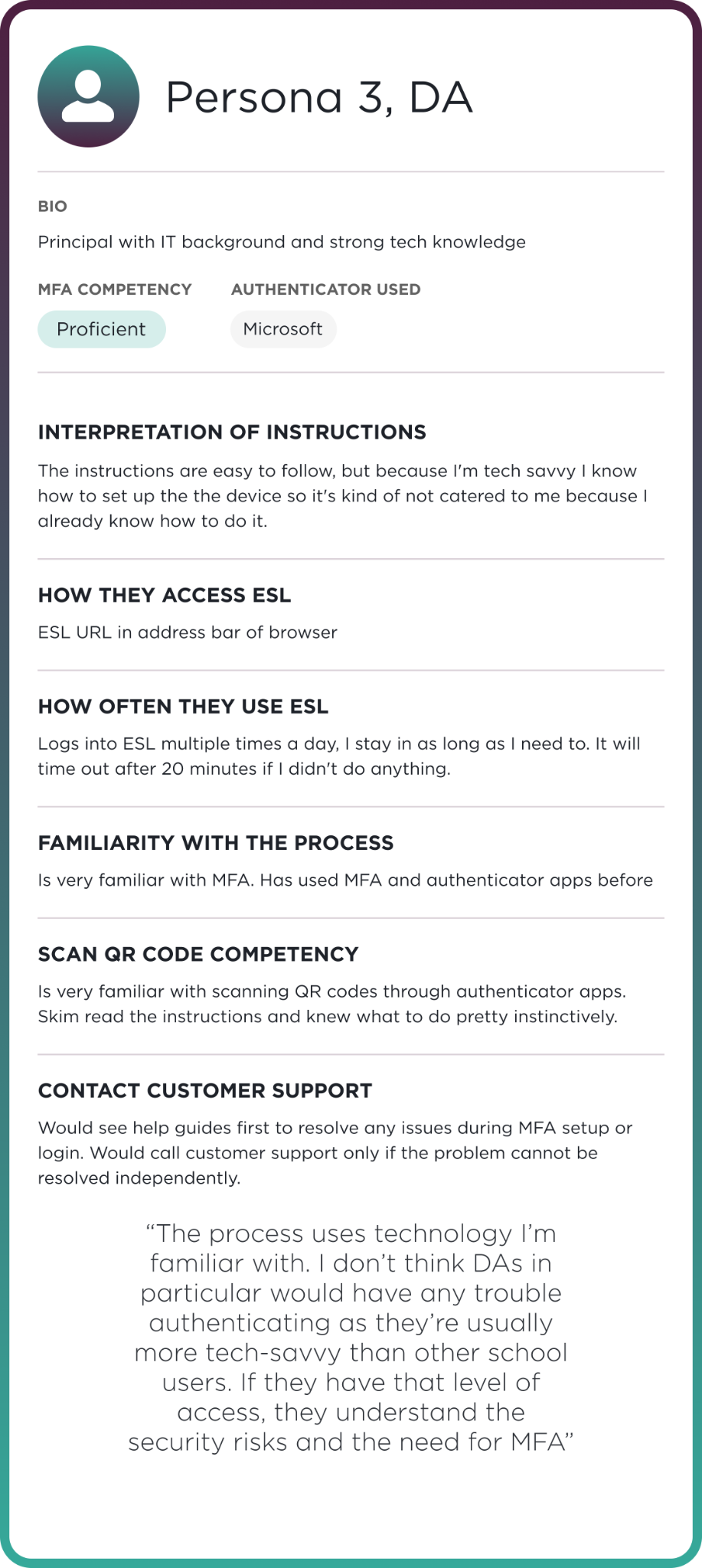
Thanks to —
UX Lead: Ramya Ravishankar
Note takers: Ramya Ravishankar, Olivia Waite, Tom Outram